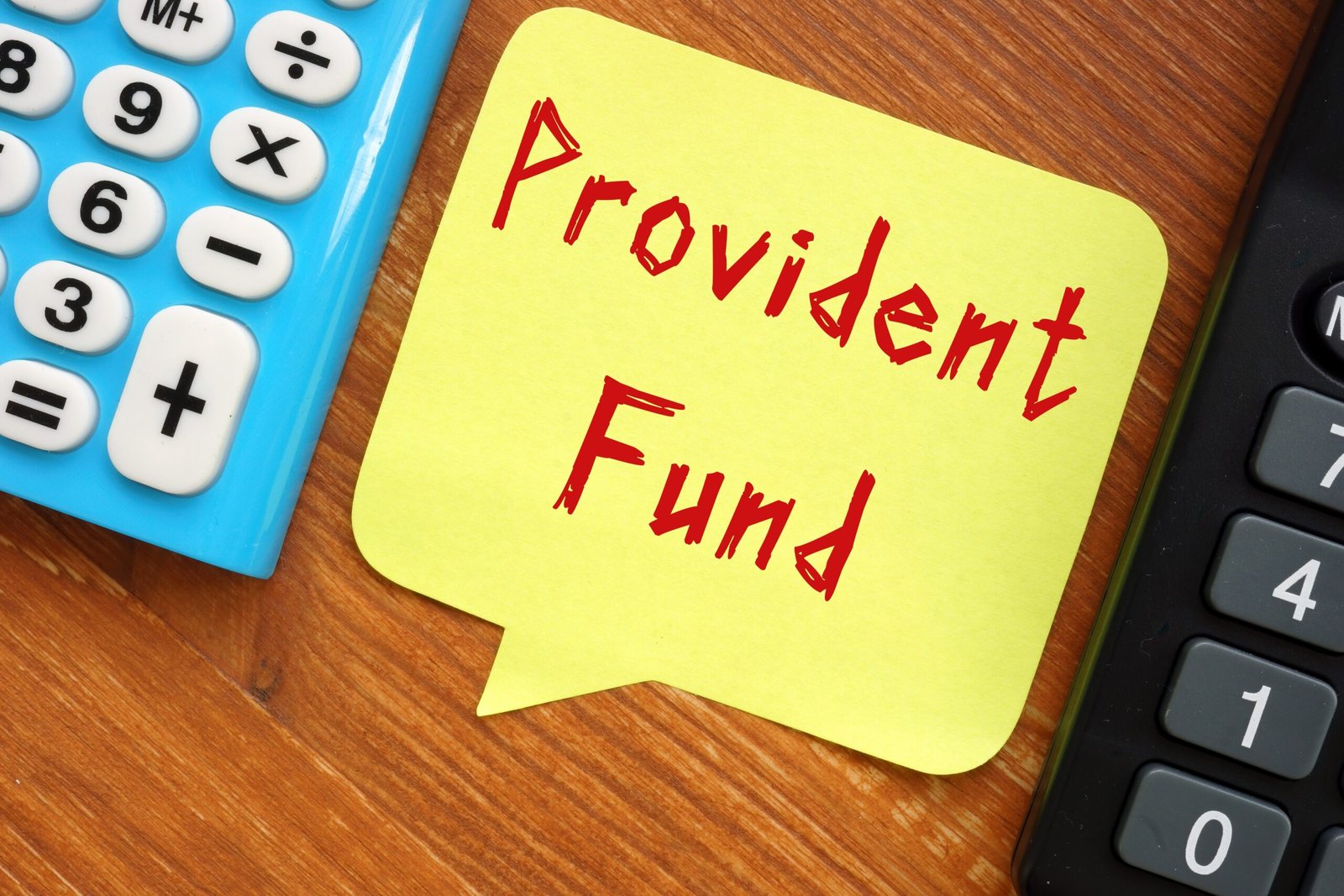Provident Fund
Withdrawal & Return Filing
EPF Scheme
- The EPF Scheme, initiated by the government, is a social security measure aimed at fostering savings habits among employees and ensuring a secure financial future post-retirement.
- Employees make regular contributions deducted from their salaries, gradually building up a corpus of savings.
- Upon retirement age or leaving employment, accumulated funds become accessible in the form of a lump sum payment.
- Both employers and employees contribute 12% of the employee’s basic pay.
- Employer’s contribution: 3.67% directed to the employee’s EPF account and 8.33% to the Employees Pension Fund (EPF).
- Eligible withdrawal circumstances include retirement (typically at or after age 58), periods of unemployment lasting two months or more, or in the event of death before the designated retirement age.

Enhancing Your EPF Filing & Withdrawal Experience with Covering Taxes
Facilitating EPF Withdrawal and Return Filing
Required Documents for PF Withdrawal
To ensure a smooth and efficient PF withdrawal process, please have the following documents prepared:
PF Withdrawal and Tax Implications
- EPF withdrawals are tax-exempt if the employee contributes consistently for five consecutive years.
- However, if there’s a break in EPF contributions within the five-year period, the withdrawal becomes taxable for that financial year.
- Tax Deducted at Source (TDS) is applicable when an EPF withdrawal exceeds Rs. 50,000 before completing five years of service.
- For early EPF withdrawals exceeding Rs. 50,000: TDS of 10% is deducted if the employee provides their PAN card. Without a PAN card, the TDS rate increases to 30%.
- Employees can avoid TDS by submitting FORM 15G (for individuals below 60 years) or FORM 15H (for individuals above 60 years).
- EPF withdrawals after completing five years of continuous service are tax-free, with no TDS deducted. At Covering Taxes, we keep you informed for optimal financial planning, helping you make informed decisions regarding EPF withdrawals.

Types of EPF Withdrawal
Explore the various categories of EPF withdrawals, each designed to cater to specific needs:
EPF Final Settlement (Form 19):
EPF Form 19 facilitates the final settlement, allowing withdrawal of the entire EPF corpus. This form captures crucial member information, employment history, and preferred mode of payment. Online submission involves a series of steps, including UAN login, bank account verification, and Aadhaar OTP verification
Partial Withdrawal (Advance) with EPF Form 31:
EPF Form 31 enables partial withdrawal or advance from the EPF account to address specific financial needs. To initiate the process, visit the EPFO portal and ensure your bank account, PAN, and Aadhaar details are updated. Online submission entails logging into the EPFO portal, selecting the ‘Claim’ option, and providing the necessary details.
EPS (Employee Pension Scheme) Withdrawal using Form 10C:
Form 10C is utilized for withdrawing or transferring the EPS amount. Online filling requires UAN login, navigating to ‘Online Services,’ and selecting ‘Claim’ to initiate the EPS withdrawal process. Verification steps include confirming details, specifying the claim type, entering the permanent address, and completing Aadhaar OTP verification.
Employee Provident Fund (EPF) Withdrawal Made Easy
Experience hassle-free EPF withdrawal with the expert support provided by our tax professionals.
Add nomination Details In EPFO
- Exclusive of 18% GST
- Pay Extra 1000 Rupees For Live Nomination
Frequently Asked Questions
Provident Fund (PF) withdrawals are permissible under specific circumstances, including retirement, extended unemployment lasting at least two consecutive months, or relocation abroad.
You can initiate PF withdrawal either through the online portal of the Employees’ Provident Fund Organization (EPFO) or by submitting a physical application to your regional PF office.
The process for PF withdrawal involves completing either Form 19 (for EPF withdrawal) or Form 10C (for EPS withdrawal), accompanied by relevant documentation, which should then be submitted to the EPFO office. Alternatively, individuals can opt for the online initiation of the withdrawal process via the EPFO portal.
Form 15G serves as a self-declaration document that allows individuals to declare their total income falls below the taxable limit. By submitting this form to the EPFO, applicants can prevent TDS (Tax Deducted at Source) on their PF withdrawal.
Form 15G for PF withdrawal can be acquired by visiting the official website of the EPFO or by requesting it from the nearest EPFO office.
Online PF withdrawal can be initiated via the EPFO portal by logging in using your UAN (Universal Account Number) and filling out the digital withdrawal claim form.
The primary form for PF withdrawal is Form 19, while Form 10C is used for EPS (Employee Pension Scheme) withdrawal. Additionally, Form 15G is submitted to declare that TDS should not be deducted.
To ascertain the status of your PF withdrawal, access the EPFO portal and proceed to the ‘Track Claim Status’ section after logging in.
PF withdrawal does not adhere to a fixed limit. Instead, the amount that can be withdrawn is contingent upon various factors, including the purpose of withdrawal, tenure of service, and other eligibility criteria stipulated by the EPFO.
Generally, the online PF withdrawal procedure is completed within approximately 10 to 15 days. However, the precise duration may vary depending on the thoroughness of documentation and the efficiency of verification procedures.
To withdraw the entire PF amount, you must complete Form 19 for EPF withdrawal and Form 10C for EPS withdrawal. These forms can be submitted either online or offline, depending on your preference. Ensure all necessary documentation is accurately completed for a smooth withdrawal process.
Covering Taxes offers expert assistance and support throughout the PF withdrawal journey, delivering thorough guidance and ensuring a seamless and stress-free process for our clients.
The EPFO sets forth regulations governing PF withdrawal, encompassing eligibility standards, documentation prerequisites, and circumstances permitting members to access their Provident Fund funds.
Indeed, PF withdrawal may trigger tax implications, contingent upon variables like the purpose of withdrawal and the duration of PF contributions.
To access your PF funds, complete the withdrawal form and submit it either through your employer or directly on the EPFO portal.
To initiate PF withdrawal, you’ll need to furnish a completed withdrawal form along with KYC documents and any other relevant proofs as specified.
Absolutely, PF withdrawal can be conveniently completed online via the EPFO portal.
Opting for online PF withdrawal provides both convenience and efficiency. With Covering Taxes by your side, you’ll experience a seamless digital process, maximizing the advantages of online withdrawal.
While the duration for online PF withdrawal processing may differ, it typically proves swifter compared to conventional methods.
Covering Taxes utilizes strategic approaches to streamline PF withdrawal processes, providing expert guidance to swiftly navigate all necessary procedures. This ensures our clients experience a seamless and timely withdrawal process.
PF Return Filing Procedure

PF registration is the pivotal process through which an establishment or employer affiliates with the Employees’ Provident Fund Organization (EPFO), marking their participation in the Provident Fund (PF) scheme.
This registration is obligatory for entities employing 20 or more individuals, while entities with fewer than 20 employees have the choice to opt in voluntarily.
Upon successful registration, the employer is bestowed with a unique PF code, serving as a cornerstone for all PF-related transactions, encompassing monthly contributions, withdrawals, and requisite filings.
Even entities with less than 20 employees possess the opportunity to voluntarily register for PF benefits, underscoring the inclusive nature of the scheme.
Employers vested with PF registration are bound by mandate to diligently file monthly returns, thereby upholding compliance with prevailing regulations, a testament to their commitment to statutory adherence and employee welfare.
Essential Documentation for EPFO Registration
These documents collectively form the bedrock of EPFO enrollment, ensuring smooth integration into the Provident Fund scheme.
Essential Forms for PF Return Filing
Various forms are required for Provident Fund (PF) return filing, each serving a specific purpose. Below is a list of the essential forms and their uses
Form 5
Registration of new employees and updating employee details (e.g., name, address, date of birth).


PF Return Due Dates
The due dates for filing PF returns differ based on the type of establishment:
Private Establishments:
- Private establishments are required to file their returns on a monthly basis. The submissions are due by the 15th of the following month.
- For example, if the return period is January, the due date for the PF return is February 15th.
Government Establishments:
- Government establishments follow a quarterly filing schedule.
- Returns must be submitted by the end of the month following the end of each quarter.
- For instance, if the quarter ends on March 31st, the due date for the PF return is April 30th.
Important Due Dates:
| Type | Due Date |
|---|---|
| PF Payment | On or before the 15th of every month |
| PF Annual Return | 25th April of every year |
Failing to meet these deadlines can result in penalties and legal consequences.
At Covering Taxes, we ensure timely and accurate filing of your PF returns, helping you stay compliant and avoid any potential repercussions.

Consequences of Non-Compliance with PF Filing
Failure to comply with PF filing requirements can lead to significant penalties and legal actions. The EPFO can impose fines up to Rs. 5,000 per day for late submissions. Non-compliance also risks employee benefits, potentially causing delays or reductions in pension payments.
Penalty Rates Based on Delay Period:
| Period of Delay | Penalty Rate (per annum) |
|---|---|
| Up to 2 months | 5% |
| 2 – 4 months | 10% |
| 4 – 6 months | 15% |
| Above 6 months | 25% |
And 12% interest P.A for every single day under Section 7Q
Understanding and adhering to these deadlines is crucial to avoid these severe penalties and ensure uninterrupted employee benefits.
Requirements for EPF Returns
To file EPF returns, the following details and documents are essential:
- Employer Login Credentials:
- Monthly Salary Statement:
- Employee Details:
- Contribution Amounts:
- ECR (Electronic Challan cum Return):
- UAN Details:
- Employer Login ID
- Password for the Unified Portal EPFO
- Detailed salary statement including paid days
- Information on new joiners along with their family details
- Exit information for departing employees
- Employer’s contribution to EPF
- Employee’s contribution to EPF
Copy of the ECR Challan
- Universal Account Number (UAN) for each employee
- KYC compliance details for all employees
EPF Monthly Return Filing Plans
EPF Regular
- Exclusive of 18% GST
- PF Return Filing For up-to 30 Employees
- Support Employees For PF Transfer
- Prepare and rely on Notices
- Member's KYC Updates
- Wages Register
- Pay Extra 2999 For Live Filing
- .
- .
EPF Standard
- Exclusive of 18% GST
- PF Return Filing For Up-to 50 Employees
- Support Employees For PF Transfer
- Prepare and rely on Notices
- Member's KYC Updates
- Wages Register
- Pay Extra 4999 For Live Filing
- .
- .
EPF Premium
- Exclusive of 18% GST
- PF Return Filing For Up-to 100 or more than 100 Employees
- Support Employees For PF Transfer
- Inspection Handling
- Prepare and rely on Notices
- Member's KYC Updates
- Wages Register
- Pay Extra 7999 For Live Filiing
- .
Frequently Asked Questions
Continuous failure to file EPF returns from the time of registration can lead to serious repercussions. The EPFO may issue notices or summons to the concerned employer for non-compliance, potentially resulting in legal action and significant penalties. Ensuring timely and accurate filing is crucial to avoid these issues.
Once the overdue PF contributions are recovered, the members are entitled to receive full interest for each month of the delay. The delayed payment by the employer will not impact the interest accrued on the members’ contributions.
Before filing EPF returns, employers must register their employees with the EPFO through the employer portal to generate a Universal Account Number (UAN) or member ID. This involves submitting detailed information about each employee.



